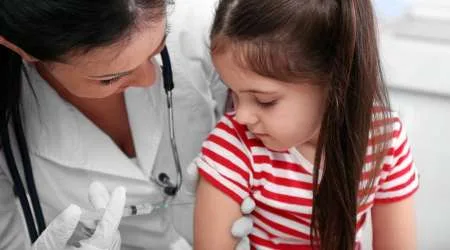Immunisation by the numbers: The battle is almost won

Anti-vaxxers aren't winning many arguments, but the fact they're winning some remains a concern.
Yesterday, the Australian Medical Association and the Australian Academy Of Science jointly launched a booklet designed to counter myths about the benefits and risks of childhood vaccination. The Science of Immunisation: Questions and Answers provides a detailed discussion of the scientific research in this area, presented in a format that makes it accessible to non-specialists. You can grab a free copy on the Academy site.
It's a well-designed resource, but just how many people need it? Current data from the Australian Childhood Immunisation Register suggests that at 12 months of age, 93% of children are fully immunised. At age two, the figure drops slightly to 90.7%, but by the age of five, it's back up to 92.9%.
The general consensus is that to achieve "herd immunity" and stop diseases from spreading, immunisation levels need to be between 90% and 95%, so the job is almost done.
Except – and it's an important exception – it does depend on where you live. We recently highlighted the vaccination levels for kindergarten kids at schools throughout NSW.
In some areas, the proportion of children who were either not vaccinated at all or not fully vaccinated was much higher than the national average. In the Mullumbimby area, for instance, the proportion of unvaccinated five year olds is 53.33%, which is very disturbing.
Projects like The Science of Immunisation can help here, but I suspect that many parents in that area have already made up their mind and aren't going to be persuaded to actually look at the evidence. Once you've adopted a conspiracy theory mindset, facts that contradict you are not an inconvenience; they're just proof of how widespread the conspiracy theory is.
So what else can be done? So far, the most effective tactic seems to be the "No Jab No Pay" policy, which means that children who aren't fully immunised are no longer eligible for a range of Commonwealth benefits covering child care.
Since that policy was introduced this year, 6,000 children previously registered as "conscientious objectors" have been immunised, and another 148,000 whose immunisations were incomplete have been caught up. Hopefully that's enough, and Mullumbimby won't be swamped with measles.
Angus Kidman's Findings column looks at new developments and research that help you save money, make wise decisions and enjoy your life more. It appears Monday through Friday on finder.com.au.
Latest news headlines
- HECS-HELP hell: Your uni debt could jump by $900+ by July
- Ordinals and runes – the new crypto craze?
- Earn up to $1,297 by investing some of your savings | Dollar Saver tip #79
- Why are there millions of dodgy cars on Australian roads?
- Shady shoppers: Petty crime escalates as Australians hit hard by cost of living crisis
Picture: Shutterstock

